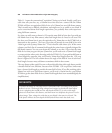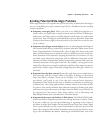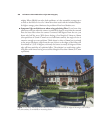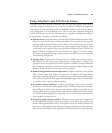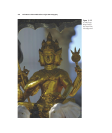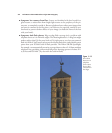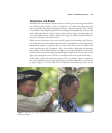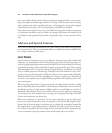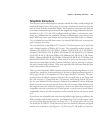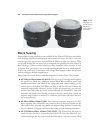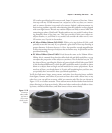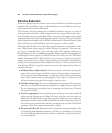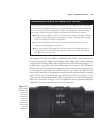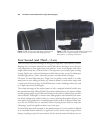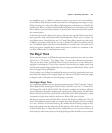
discs are a uniform shade, which, while better than the doughnut effect, is not as pleas-
ing as the bright center/dark edge rendition. The shape of the disc also comes into play,
with round smooth circles considered the best, and nonagonal or some other polygon
(determined by the shape of the lens diaphragm) considered less desirable.
If you plan to use selective focus a lot, you should investigate the bokeh characteristics
of a particular lens before you buy. Nikon user groups and forums will usually be full
of comments and questions about bokeh of particular lenses, so the research is fairly
easy.
Add-ons and Special Features
Once you’ve purchased your telephoto lens, you’ll want to think about some appropri-
ate accessories for it. There are some handy add-ons available that can be valuable. Here
are a couple of them to think about.
Lens Hoods
Lens hoods are an important accessory for all lenses, but they’re especially valuable with
telephotos. As I mentioned earlier, lens hoods do a good job of preserving image con-
trast by keeping bright light sources outside the field of view from striking the lens and,
potentially, bouncing around inside that long tube to generate flare that, when coupled
with atmospheric haze, can rob your image of detail and snap. In addition, lens hoods
serve as valuable protection for that large, vulnerable, front lens element. It’s easy to for-
get that you’ve got that long tube sticking out in front of your camera and accidentally
whack the front of your lens into something. It’s cheaper to replace a lens hood than it
is to have a lens repaired, so you might find that a good hood is valuable protection for
your prized optics.
When choosing a lens hood, it’s important to have the right hood for the lens, usually
the one offered for that lens by Nikon or the third-party manufacturer. You want a hood
that blocks precisely the right amount of light: neither too much light nor too little. A
hood with a front diameter that is too small can show up in your pictures as vignetting.
A hood that has a front diameter that’s too large isn’t stopping all the light it should.
Generic lens hoods may not do the job.
When your telephoto is a zoom lens, it’s even more important to get the right hood,
because you need one that does what it is supposed to at both the wide-angle and tele-
photo ends of the zoom range. Lens hoods may be cylindrical, rectangular (shaped like
the image frame), or petal shaped (that is, cylindrical, but with cut-out areas at the cor-
ners which correspond to the actual image area). Lens hoods should be mounted in the
correct orientation (a bayonet mount for the hood usually takes care of this).
David Busch’s Nikon D7000 Guide to Digital SLR Photography374



